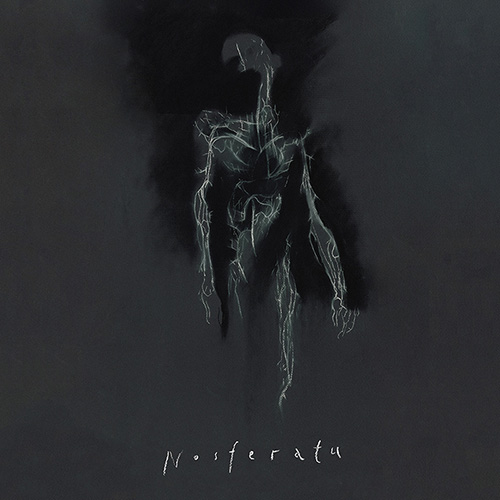
musicAeterna Orchestra and Chorus
Conductor: Teodor Currentzis*
Chorusmasters: Vitaly Polonsky, Arina Zvereva
Nosferatu: Tasos Dimas
Persephone: Sofia Hill
Coryphaeus: Alla Demidova
Three Graeae: Natalia Pschenitschnikova
The Mirror of Three Graeae: Eleni Lydia Stamellou
* Teodor Currentzis appears courtesy of Sony Classical
Помимо оригинального поэтического текста, в либретто используется множество документальных списков: анатомические списки, состав крови, списки болезней, ядовитых и лекарственных трав и многие другие. Эти списки запускают механизм порождения символов и смыслов. Кровеносная система человека предстает символическим лабиринтом. Перед нами раскрывается галлюциногенный пейзаж, сталкивающий высокое и низкое, жизнь и смерть, свет и тьму, прошлое и будущее в непрерывном движении к потустороннему. Это столкновение рождает сверхъестественное настоящее, в котором обитают эринии, кошмары, животворящие и смертоносные видения. Этот лабиринт ведет Носферату не к небесам, а к ядру потустороннего мира, где скрывается новый Аид, или, возможно, новый рай.
Опера «Носферату» – это погружение внутрь человеческого организма, отражение звуков и картин, рожденных в лабиринте тела. Фактически все действие оперы происходит внутри Носферату, все персонажи – порождение его внутреннего мира. Он постоянно возрождается, воссоздается, констатируя безысходность человеческой цивилизации.
Музыкально идея погружения внутрь человеческого организма воплощается не столько в натурализме средств, сколько в попытке воссоздать в структуре музыкального текста и в самом звуковом материале ритмическую и акустическую ауру работающего организма. Клаустрофобия человеческого тела, воспринятого, как клетка, в которой обречен биться свободный дух.
Дмитрий Курляндский
In addition to being an original poetic text, the libretto uses a great many factual enumerations, such as lists of items related to human anatomy, to components of human blood, as well as lists of ailments, of poisonous and medicinal plants and herbs, and of many other things. These lists set in motion the mechanism of generating symbols and meanings. The human circulatory system turns into a symbolical labyrinth. We are presented with a hallucinogenic landscape in which the lofty collides with the lowly, life with death, light with darkness, the past with the future, in the continuous movement toward the otherworldly. This collision engenders a supernatural present that teems with Erinyes, nightmares, life-giving and lethal visions. The labyrinth leads Nosferatu not to heaven but to the nucleus of the other world that conceals a new Hades or, perhaps, a new paradise.
The opera “Nosferatu” is an attempt to immerse into the human organism, to reflect the sounds and images produced inside the body. The action of the opera actually takes place entirely inside Nosferatu, and all of its characters are products of his inner world. That world constantly regenerates and reconstructs itself, showing how desperate human civilization is.
The opera puts a special emphasis on the quality of despair, starting with the mythology of ancient Greece, with Persephone as the first example of the living/dead dichotomy (each year she would spend six months in Hades and six months on earth), through the rich analogies from the Medieval literatures, all the way to the literary themes of the Romantic period, and continuing in the cinematography of the 20th and 21st centuries, which includes over one hundred films on the subject.
From the standpoint of music, the idea of immersion into the human organism is realized not so much through naturalistic means, but rather through an attempt to recreate the rhythmic and acoustic aura of a functioning organism in the structure of the musical score and in the very material of the sounds: the claustrophobic nature of the human body is depicted as a cage in which the free spirit is doomed to thrash about.
Dmitri Kourliandski